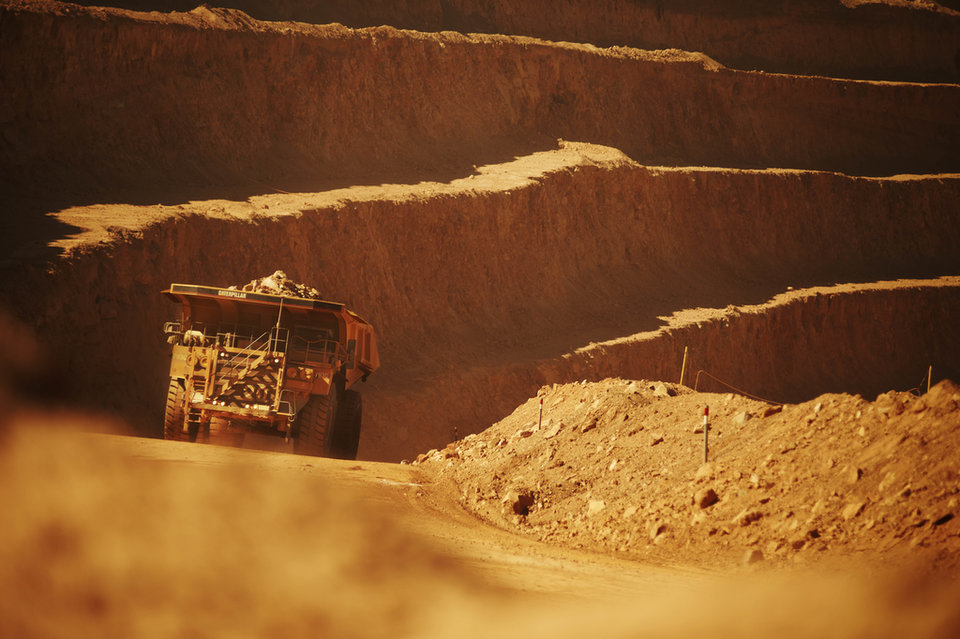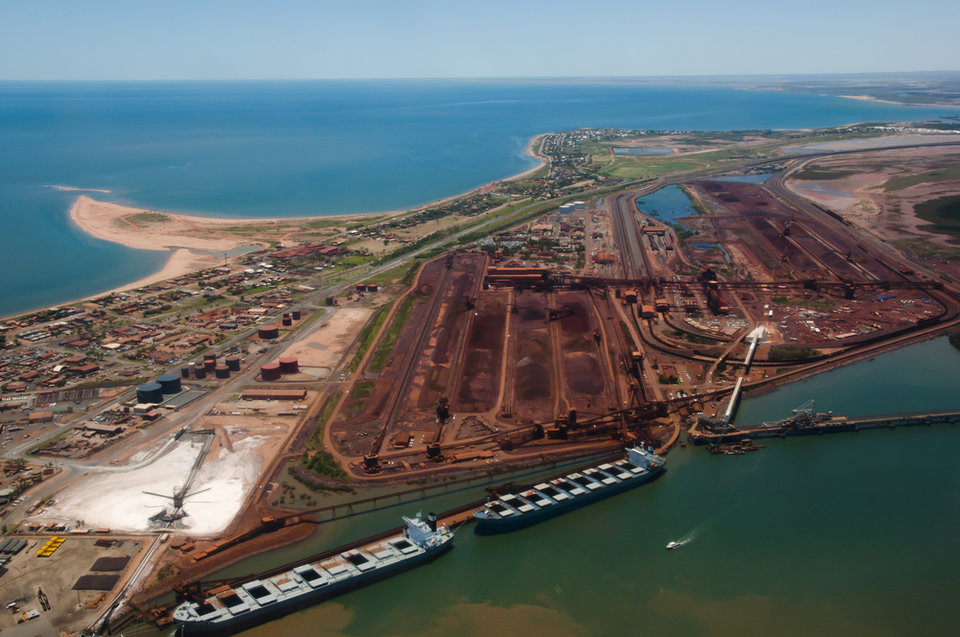Crushing comminution: decarbonising mining’s biggest energy user
Crush It! is a new challenge launched to encourage Canadian innovators to develop new, clean technologies for crushing mined rock, a process that uses a huge amount of energy. The competition hopes to drive the next big innovation breakthrough, as Molly Lempriere finds out
Scroll down to read the article
Great strides have been made in many aspects of the mining sector to reduce emissions with the development of electric vehicles and automated systems, while monitoring systems have also improved. However, one of the industry’s largest emitters has thus far been passed over due to sheer expense and complexity.
Comminution, the process whereby rocks are crushed, grinded and cut into smaller parts, accounts for 56% of the mining sector’s total energy usage, making it a major polluter. The process represents 3% of the world’s generated electric power usage.
To change this, a new competition has been launched by Natural Resources Canada to find a clean alternative. The Crush It! Challenge will form part of the Impact Canada Initiative and will call on innovators to develop new technologies that could dramatically reduce the amount of energy needed to crush rock.
The competition launched on 15 January 2019 and is open to everyone, as Natural Resources Canada’s Lands and Minerals Sector senior policy analyst Dan Thomson and deputy director Patrick Pearce explain.

Mark Crowe, managing director at Brand Finance Australia. Credit: Brand Finance.
Molly Lempriere
Just to start with, what is the Crush It! Challenge?
Dan Thomson (DT): The Crush It! Challenge is a C$10m prize-based competition, designed to drive the next big innovation breakthrough, to reduce the energy needed for crushing and grinding rock within the mining cycle.
Applicants in Crush It! are challenged to find solutions that can produce a major step change of at least 20% of the energy required for crushing and grinding, compared to current industry baseline technologies. The 20% is sort of a guideline for the challenge, and not mandatory for entry, to meet that goal. Our applicants will be eligible for up to three financial prizes to help them make their visionary ideas a reality.
At the initial stage, there is a C$10,000 micro-grant, for qualifying small-scale innovators that are selected as challenge finalists, so up to 12 semi-finalists, to help them pitch their ideas. Then there's C$800,000 for each selected finalist, up to six finalists, via a contribution agreement with Natural Resources Canada to develop the idea and get it tested and validated. Then, C$5m for the grand prize winner, the finalist who demonstrates the best solution with the most potential to transform energy use in Canada's mining industry.
What sort of applicants are you expecting?
DT: We're actually kind of expecting everybody and anybody. The Government of Canada is looking more and more at innovative challenge or programme pieces in order to open up the space to a wider community of innovators. That is reflected in all of the challenges of development; each challenge has a different design but all seek to be as inclusive as possible to draw in this wide range of innovators. This includes youth innovators in particular, who can provide a more unique or comprehensive opportunity for solutions that would fall outside our traditional programming.
So the Crush It! Challenge is open to everyone from large companies all the way down to individual Canadians and garage innovators, and we hope that the idea of a challenge with that really big cash prize will attract innovators of all shapes and sizes. The mining sector’s clean tech solutions of the future will need to be more than just tinkering around the edges of existing technologies, and this requires new ways to encourage more ambitious responses to how we tackle the sector’s more pressing issues.
BHP topped Brand Finance's Mining, Iron and Steel 25 league table for 2018. Credit: BHP.

Why did you choose Sudbury for the announcement of the competition?
Patrick Pearce(PP): Sudbury is one of Canada’s core mining clusters, and it’s home to a large and significant community of our sector’s clean tech innovators. The city is home to two international mining giants, Glencore and Vale, as well as about 40 other smaller mining and exploration companies. There are 15 operating mines, two mills, two smelters and a nickel refinery, and because of this, Sudbury sustains modern mining support infrastructure. This cluster alone represents upwards of 90% of all mining activity in Ontario, and it includes the development of Canada’s first all-electric mine, Goldcorp’s Borden mine, which is located in a small community called Chapleau, near Sudbury.
These firms and mining companies in Sudbury rely on a network of approximately 300 local SMEs, in the supply and service sector, and they represent a critical source of innovation for the sector, both across Canada and internationally. This network of mining supply technology firms contribute over C$4bn to the local economy and employ over 14,000 people directly.
Then in addition, the area is home to some unique non-profit innovation centres, one called NORCAT, which is the hub for mining training, innovation and incubation that accelerates the development of new technologies and equipment. As well as this, there is the Centre for Excellence in Mining Innovation, or CEMI, a group that works to ensure that mining innovations are commercially viable and achieve a level of operational integration into day-to-day mining activities. We have chosen to collaborate with this organisation to help mobilise our communities and build linkages across the mining innovation landscape.
So all this work, including the Crush It! Challenge, is designed to enable a vibrant well-prepared innovation ecosystem that is necessary to ensure the success of the challenge, but also the success of the ecosystem going forward. There are natural synergies between the solvers and the communities that we're trying to reach and we're trying to attract with the challenge. From that perspective it made sense to leverage that community for this announcement.
How important is this shift to clean technologies?
PP: We think it's incredibly important. We think that there's two particular areas where Crush It! will support this shift and this overall broader policy objective. Firstly, in reducing Canada's greenhouse gas (GHG) emissions; we know that in 2015 Canadian mining activities resulted in approximately eight megatonnes of GHG emissions, and that's largely because of the industry’s reliance on fossil fuel energy sources.
We have a lot of mining operations in remote, northern regions, which are not connected to an electrical grid, so they have to source their power from fuels. These off-grid mining operations have a huge reliance on diesel, and this then translates to significant GHG emissions.
Then the second area is reducing the waste generated through the extraction and processing process itself. Innovative solutions that target greater efficiencies in productivity could reduce the quantity of waste materials that are typically produced by mining. So here thinking about more selective extraction methods, maybe more efficient waste sorting, so that there's more productive material going through the ball mills.
Then leading towards potentially improving the environmental footprint of mining operations again, new technologies that require less fresh water to process materials, or less harmful reagents, therefore leading to less tailings.
How difficult would it be to replace old machinery with any innovative technologies hopefully generated through Crush It!?
DT: I think we've realised within our experience in the innovation ecosystem that because the mines in Canada are often multi-billion dollar investments that run 24/7, they are highly dependent on very tight scheduling. So it's a challenge no matter what to implement new technologies within existing mines.
What we're looking for in the Crush It! Challenge is a transformative technology, we're looking at moving technologies to pre-commercial adoption, and trying to find industry partners to look at implementing these technologies within new mines. But the best part about Crush It! is that it's completely technology agnostic; it's open to any kind of technological process or solution. So as far as the solution is something that requires less energy, it is fine for the challenge.
Each one of these technologies will have different opportunities for inclusion in existing mines. If you're looking at smarter ways to sort or blast ore, ways to capture energy, or sorting advancements, this could be very easily implemented into today's mines. Whereas novel grinding techniques, things that reinvent how a mining mill operates, these might be a little bit more challenging.
This is why through the Crush It! Challenge we're really fostering a suite of technologies, but we're trying to build this broader mining innovation ecosystem that will really help to put a lot of these pieces back into a space that hasn't seen a lot of activity.

The 'Think Big' campaign reminded the public of BHP's crucial contribution to Australia's growth. Credit: BHP.